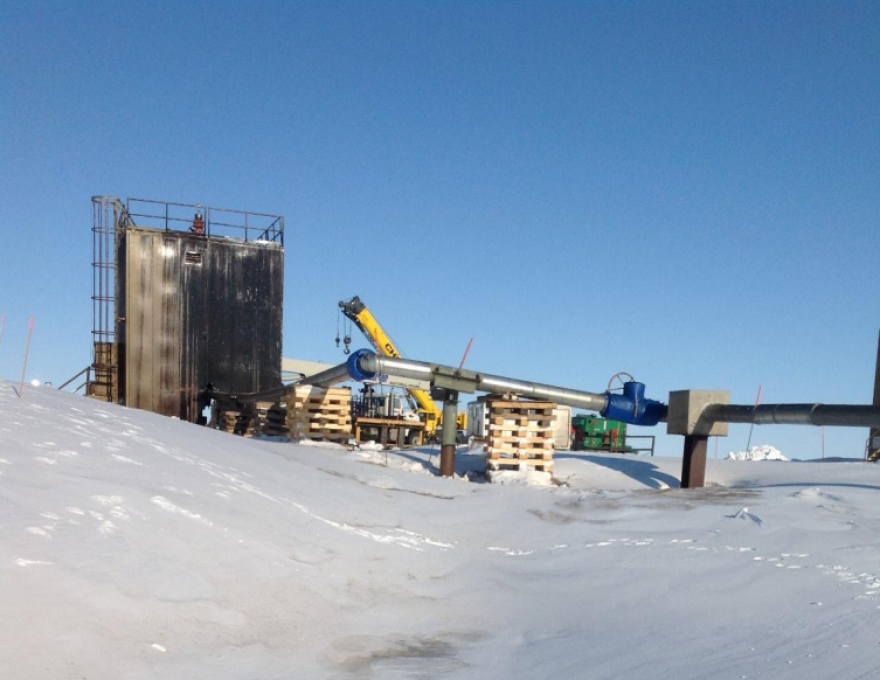BP was forced to shut down five at-risk wells on the North Slope after investigating an oil leak that happened this April.
That’s according to a report the company provided to the Alaska Oil and Gas Conservation Commission (AOGCC).
BP told AOGCC that the April leak was most likely caused by thawing permafrost, which put uneven stress on the well. Eventually, the surface casing at the top of the well gave out. This caused the wellhead to rise up several feet, hit the top of the well house and knock off a valve, which spewed oil and gas.
According to BP, the oil didn’t impact the tundra and neither wildlife nor the workers were harmed. But the leak lasted several days and drew national attention.
After the leak was plugged, BP’s investigation found 14 other wells with a similar design. Five of those wells were still in production, so BP shut them all down. BP used mechanical plugs, so it's possible for the wells to start producing again.
Cathy Foerster, who sits on the Alaska Oil and Gas Conservation Commission, said even though the incident was caused by thawing permafrost, she doesn’t connect it to global warming.
“This is not linked to climate change. The permafrost subsidence to which BP refers is very localized near the wellbore. And it’s caused simply by the thermal effect of bringing hot oil from a deep reservoir, deep in the earth, up to the surface,” Foerster said.
Foerster said BP did not violate any regulations, so AOGCC won’t fine the company. Foerster added because BP shut in the wells that were similar in design to the one that leaked, she’s not worried about it happening again.
Lois Epstein of the Wilderness Society disagrees. She’s worried other wells could be at risk — potentially wells owned by other companies.
“When you have something like this that’s completely unexpected, it’s important to see whether this is an anomaly or it’s something that could be a pattern,” Epstein said. “We need to pay a lot of attention to this particular incident, make sure the investigation is done well, both by the industry and by the state, and ask as many questions as possible and figure out whether this is something that could be recurring in the future.”
Epstein also said she thinks it’s too early to say climate change wasn’t a factor at all. But she agreed warm oil in the well could have caused the permafrost to melt, too.
BP shared its investigation with other oil companies. In its report to AOGCC, BP said it is expanding its monitoring plan for permafrost thaw.
BP didn’t agree to an interview for this story. In a statement, the company said it is “committed to operating Prudhoe Bay in a safe, reliable and complaint manner.”
Clarification: This story has been updated to clarify that the wells were not permanently plugged.

